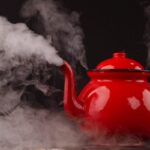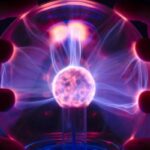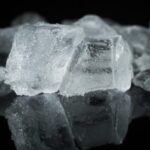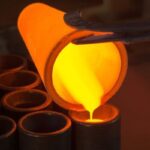We explain what the gaseous state is and some of its properties. Also, the transformation of matter to a gaseous state and examples.
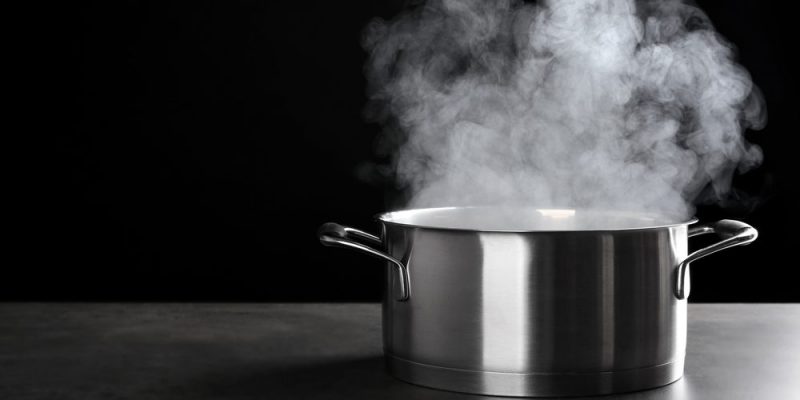
What is the gaseous state?
The gaseous state is understood to be one of the four states of aggregation of matter, along with the solid, liquid and plasma states.
Substances in a gaseous state are called “gases” and are characterized by having their constituent particles little joined together that is, expanded throughout the container where they are located, until they cover the available space as much as possible.
The latter is due to the fact that the particles that make up the gases have a very slight force of attraction between themselves and for this reason they have no shape nor do they occupy a defined volume in space. On the other hand, the density of gases is much lower than that of solids and liquids, and they also have very little response to gravity.
Due to the little interaction between the gas particles, they are suspended with very little influence of gravity (it can be said that they “float”). Furthermore, despite their almost zero cohesion, gases have an enormous capacity to be compressed which is often carried out during industrial processing for transport.
The physical properties of a given gas (color, flavor, smell) can vary depending on the elements that constitute it or that are dissolved in it. For example, air is colorless, odorless and tasteless, while hydrocarbon gases such as methane have a typical unpleasant odor and may be colored.
Transformation of matter to the gaseous state
It is possible to bring certain liquids or solids to the gaseous state, usually by subjecting them to sustained drastic changes in temperature and/or pressure. In the same way but in the opposite direction, Can a gas be transformed into a liquid or a solid?. These processes can be studied separately, as follows:
- From liquid to gas: evaporation. This transformation occurs when heat is administered to the liquid. When its most superficial particles can break the surface tension of the liquid, the substance passes into the gaseous state. Evaporation occurs gradually, so the liquid passes into the gas phase slowly.
- From liquid to gas: boiling This transformation occurs when heat energy is applied to a liquid. When, by increasing its temperature, it reaches its boiling point (temperature at which the vapor pressure of the liquid coincides with the pressure surrounding the liquid), the entire liquid passes into the vapor phase, which is why we can see bubbles in the interior of the liquid. Water, for example, boils at 100ºC and turns into water vapor.
- From solid to gas: sublimation This process occurs when a solid transforms into a gas without previously transforming into a liquid. An example is seen at the poles of the Planet, where the temperature is so low that the formation of liquid water is impossible, but even so ice and snow sublimate directly into the atmosphere.
- From gas to liquid: condensation. This physical process occurs when a gas transforms into a liquid by decreasing its temperature (removing heat). Vaporization is the reverse process of condensation. By subtracting energy, the gas particles move slower, which allows them to interact more and, therefore, their attractive forces are greater. This is what happens in the atmosphere when, as it moves away from the Earth's surface, water vapor loses temperature and forms clouds that eventually precipitate in the form of water droplets through a phenomenon called rain.
- From gas to solid: reverse sublimation. This process occurs when, by removing heat, a gas passes into the solid state without going through the liquid state. It takes place under specific pressure conditions that subject the gas particles to greater interaction, which causes the gas to pass directly into the solid state. An example of this is the semi-solid frost that appears on the windows on a winter day.
See also: Homogeneous mixture
Examples of gaseous state
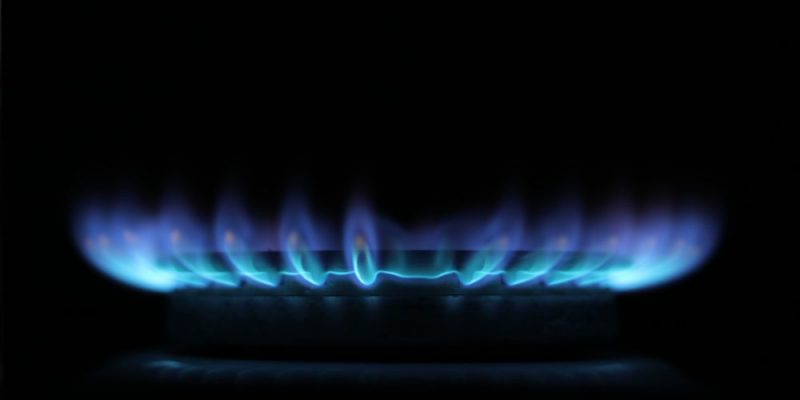
Some everyday examples of matter in a gaseous state are:
- Water vapor. When water evaporates it changes state and becomes vapor. We can check this when we cook: when boiling certain liquids we can see the column of steam emerging from the pot.
- Air. The air we breathe is a homogeneous mass of gases of various nature, such as oxygen, hydrogen and nitrogen, which are generally transparent, colorless and odorless.
- Butane It is an organic gas, derived from petroleum, composed of flammable hydrocarbons. We use it to generate heat and power our kitchens, and in lighters.
- Methane It is another hydrocarbon gas, a common byproduct of the decomposition of organic matter. It is possible to find it in quantities in swamps, mudflats, or even in the intestines of humans. It has a characteristic unpleasant odor.
References
- “The states of Matter” in Full Chemistry.
- “Gaseous” in ABC Definition.

